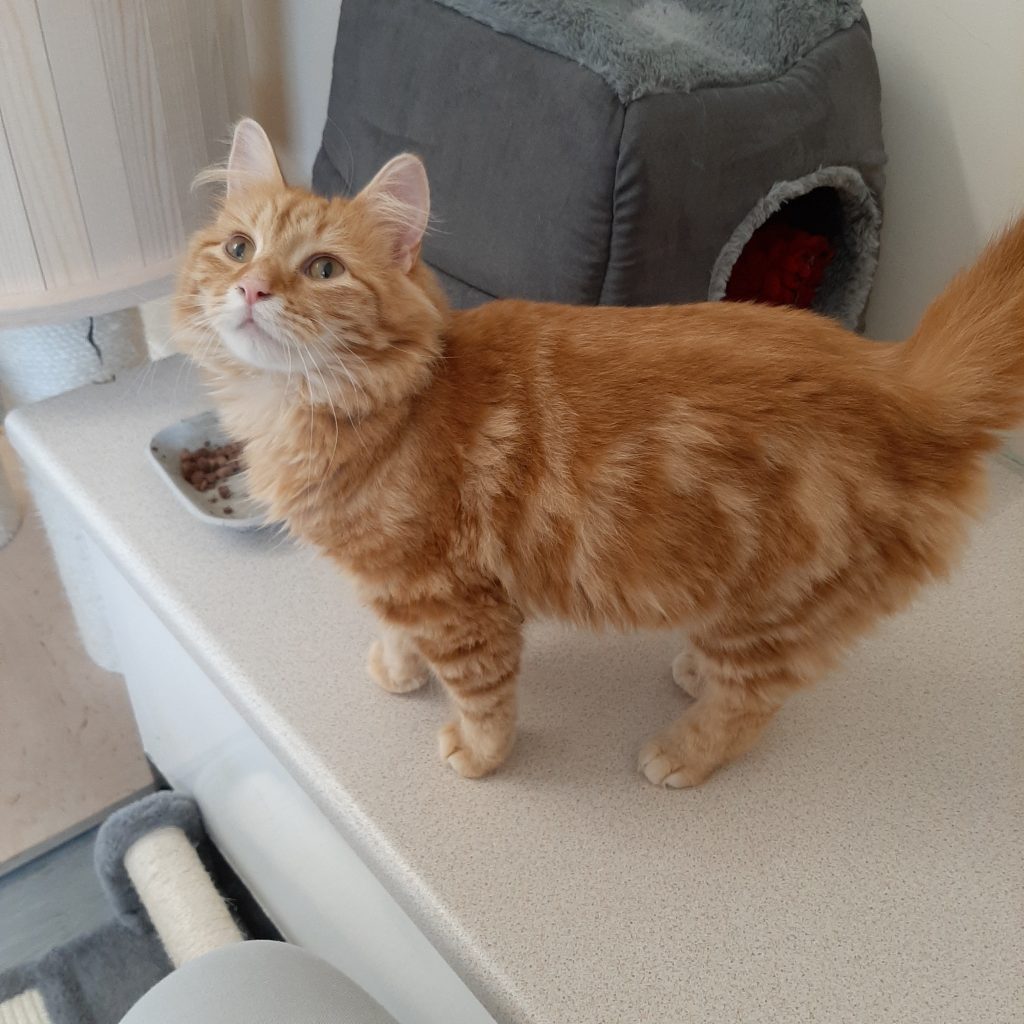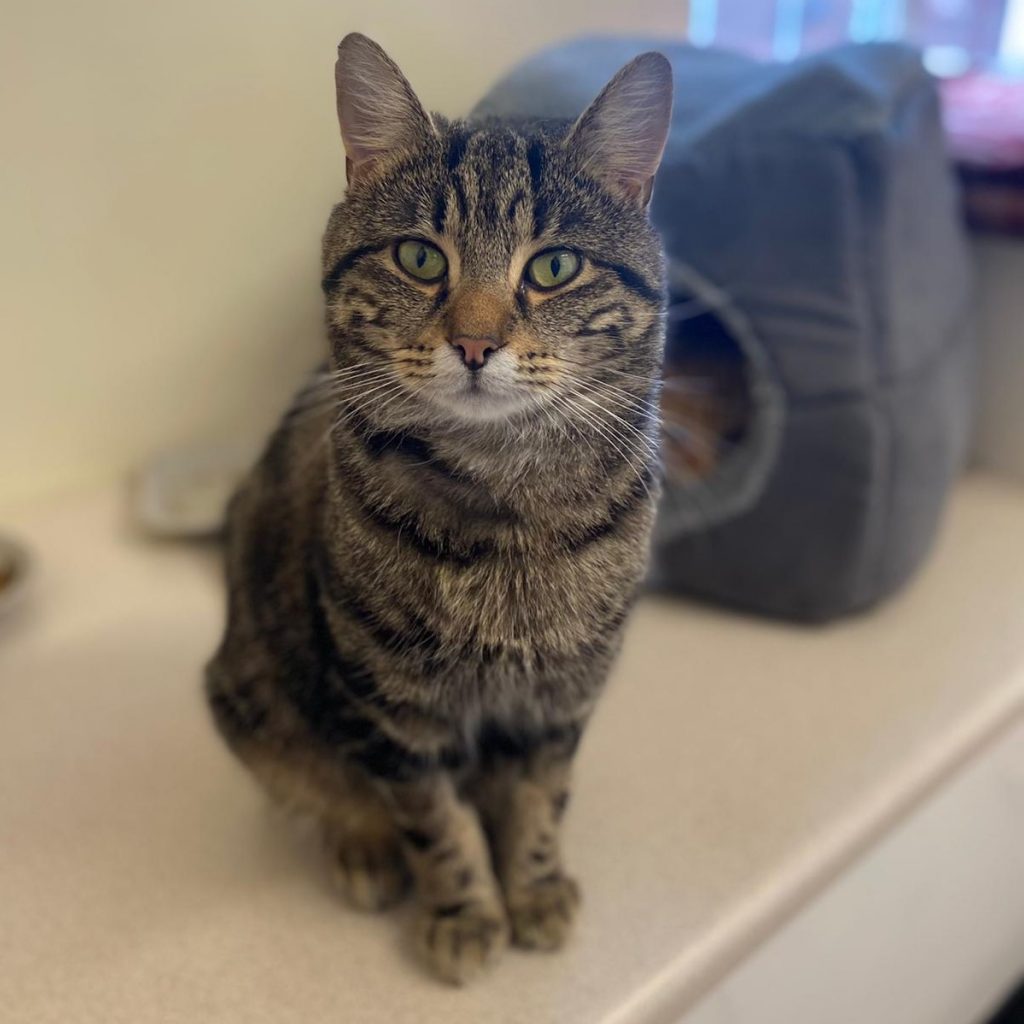We have a wide range of cats in our shelter, just waiting for their forever home. Some of our cats like to be the only cat in the household, whilst others are happy in and around feline friends. You can find this information on each cat’s profile on our website.
It may be that you have other pets, however, and are thinking of introducing a cat to your household. Lizards, such as bearded dragons, are an increasingly popular pet, but can they live in a home with a cat? In the following post, Jennifer Munsell of ReptilesLife.com gives us the answer!
How Cats and Lizards Can “Safely” Co-Exist in the Same Household as Pets
Can cats and lizards safely co-exist in the same household? No, they are not completely safe on their own. There have been cases of cats eating lizards, probably because they see small reptiles as prey. Lizards may appear as wiggly, crunchy moving toys to cats.
Many well-fed cats, however, might be happy to suppress their murderous urges in favor of a cuddle buddy. As cute as it is to imagine cats and lizards as real friends, this scenario is never going to happen naturally. If they are both hanging out in the same environment, they have to be closely supervised.
Having said that, let’s learn a few tips that can help you figure out how cats and lizards can safely co-exist in the same household as pets.
Consider the Temperament of the Animals
The key to fostering a safe relationship between cats and lizards is to choose animals with the ideal temperament for cohabiting. The following are the most important personality traits you should consider.
Friendly

Whether you’re adopting or obtaining a kitty from a friend, you’d have to consider the temperament of your pet. If you’re to keep different pet species in your home, they have to be the friendly types.
Friendly pets tend to be social, outgoing, and affectionate. They will hardly have a hard time getting used to each other’s presence. The best examples are Siamese and Maine Coon, which are two of the friendliest cat breeds that can safely co-exist with lizards. Caring for these cats isn’t difficult, so it shouldn’t be challenging to help them get along with lizards. Cats of other breeds can also be friendly, but it’s important to ascertain this first before introducing them to a lizard, and to closely monitor their behaviour afterward.
Some of the friendliest pet lizards that can safely co-exist with cats are bearded dragons (beardies) and leopard geckos, but did you know that female bearded dragons are more friendly and calmer than male beardies?
Male beardies often display territorial aggression, while female beardies show submissiveness using arm-waving. So, it will be a great help if you know the sex of your bearded dragon before introducing it to your cat. Jennifer from reptileslife.com says that there are four ways to tell the sex of your bearded dragon. The easiest way to check is by looking for hemipenal bulges, found under the tail. A male beardie will have two bulges, while a female will have one, located at the center.
Tolerant

Photo by Pierre Bamin on Unsplash
Cats and lizards will not become friends overnight. Time and tolerance play a vital role when getting these two animals together.
Lizards like beardies have a very solid reputation for being tolerant of other pets. They will not mind a curious cat sniffing them out. Cats, on the other hand, can be tolerant of other animals. But they need time to sniff, investigate, and adjust to the newcomer in the house.
Create Personal Space for Each Pet
As much as you want these two animals to co-exist in the same household, they still have individual needs. So, it is imperative to have personal space for each pet.
When one or both pets show signs of aggression during interactions, you can take them to their respective spaces to calm down.
What Is the Ideal Space for a Cat?
A cat-friendly home is an ideal space for your cat. All felines like a safe, predictable environment that smells familiar to them.
It is important to provide at least one quiet place for your cat to retreat to and hide so it can feel safe. A hiding place is also a good spot for a cat to relax after a stressful experience.
Provide the cat with easily accessible resources, including separate feeding and drinking spots, multiple litter boxes to choose from, more than one scratch post, and plenty of play opportunities.
Make sure you place feeding bowls, drinking bowls, and litter trays in quiet places. Of course, it wouldn’t hurt to make your furry friend extra happy with some seasonal treats just like these Easter tidbits.
Last but not the least, all your cat’s resources should not be in the same room as your pet lizard’s enclosure.
What Is the Perfect Space for a Lizard

Photo by Layo Animals on Unsplash
A lizard-friendly space is one that provides it with all its needs, which is usually a pet lizard enclosure.
You can create an enclosure at home or get a shop-bought one. But that’s the easy part.
The hard part is creating a background in the enclosure that meets your lizard’s needs. A central bearded dragon, for example, needs high elevated basking spots and plenty of places that it can move along and climb.
Make sure the enclosure has appropriate lighting. A lot of lizards need high heat and UVB, while others prefer cooler temperatures.
Diet is a huge part of your lizard’s wellbeing. So, make sure it gets the correct meals. Get the best greens for herbivores and nutritious insects for omnivores.
Make Sure Each Animal Is Healthy
You can only achieve safe co-existence between cats and lizards if there are no health risks involved in the relationship.
Salmonella is a zoonosis you should know before introducing your cat to a pet lizard. Reptiles, including lizards, often carry salmonella bacteria. This bacteria can make your cat sick. You need not worry about salmonella if you keep your lizard enclosure clean.

Your cat could get salmonella directly or indirectly from your lizard. It can get the bacteria directly through contact with the reptile or indirectly from contaminated surfaces or lizard droppings.
Symptoms of Salmonella Infection
If you accidentally introduced an infected lizard to your cat, you should look for the following symptoms of salmonella infection.
- Gastroenteritis (inflammation of the intestines and stomach)
- Septicemia (bacterial infection of your cat’s blood)
- Diarrhea
- Weight loss
- Vomiting
- Mucus in faeces
- Lack of appetite
- High fever
- Lethargy
- Depression
- Lymph nodes swelling
- Dehydration
- Skin discharge
- Fast heart rate
Take your cat to the vet if you see any of the aforementioned symptoms of salmonella infection.
The Best Course of Action
You can avoid putting your cat in danger of getting a salmonella infection by ensuring that your pet lizard is checked by the vet. Your veterinarian must confirm that your pet lizard is not a health risk to your cat.
Carry Out Controlled Introductions
Once you’ve made all the preparations, you can go ahead with the introductions and meetings. Note that these meetings should be controlled and supervised at all times.
Here are important things you can do:
Scent Swapping
The most important part of the whole introduction process is scent swapping. To do this, you need to have one clean cloth for the cat and a separate clean cloth for the lizard. You want to rub each cloth on the scent glands of each animal.
For your cat, rub the cloth around the cheeks and on the forehead. For your lizard, rub the cloth on the underside of its thighs. Then, take the pieces of cloth and swap them. This should help the animals sniff each other’s scent safely without direct contact.
Observe their behaviors. Are they walking away from the scent, or are they sticking around? This should give you an idea of what you should expect when they are physically closer to each other.
Close Interactions
If the scent-swapping is successful and the animals are not disgusted with each other’s scents, you can go ahead with close interactions.
There should be some distance between your cat and lizard to avoid any aggressive behavior. Concentrate on the body language of each pet for any signs of aggression.
You will know your cat isn’t comfortable if it changes its body posture, growls, or hisses. Your lizard can show signs of aggression through head-bobbing, hissing, running away, staring, tail-raising, and biting.
You should only continue with the interactions if the animals are relaxed and calm. You will know your cat is relaxed if it shows normal-sized pupils, a relaxed body posture, and ears facing forward. You will know your lizard is calm if it doesn’t run away and doesn’t show any aggressive body signs.
Continued Supervision, Vigilance, and Patience
Your cat and lizard may appear comfortable together, but this doesn’t mean that you should lower your guard.
Maintain constant supervision when they are hanging out and continue to look for any signs of aggression. Be sure to put the lizard back inside its enclosure when you are not around.
Creating a successful feline-lizard relationship may not be an easy undertaking for every pet parent. In some cases, it may take more than a few introductions and meetings to get cats and lizards to like each other. So, patience is a key feature in this process.
Another thing you should not stop doing is maintaining clean personal environments for each pet to prevent bacterial infection and disease.
FAQs
Can my cat eat my lizard?
Your cat can eat your lizard. But it rarely happens if you choose a cat breed that is friendly and social. Just make sure that all the meetings between the two animals are supervised.
Do bearded dragons have salmonella?
Beardies can carry salmonella bacteria. So, take all precautions as you would with any other lizard before introducing a beardie to your cat.
Final Words
Cats and lizards can potentially safely co-exist in the same household. You just have to choose the friendliest breeds for both pets, ensure both animals are free of any bacterial or parasitic infections, and take the time to introduce them. If fostering a relationship between these two animals seems to be challenging, you can always consult your vet or a qualified pet behaviorist for help.

